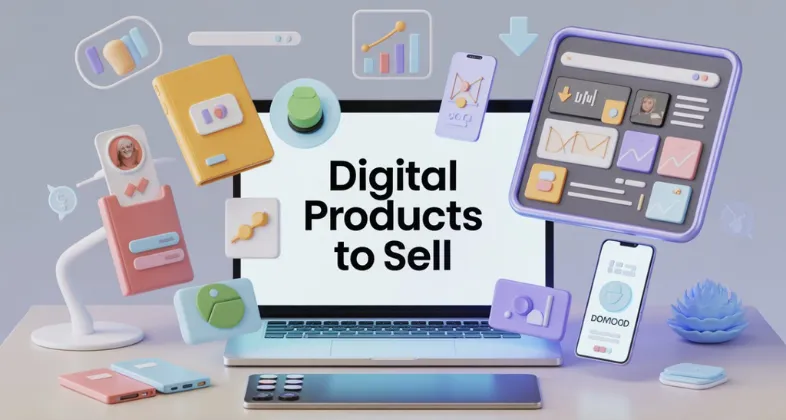In today’s crowded marketplace, creating a logo that stands out can be a daunting task. With so many businesses competing for attention, your logo needs to not only be visually appealing but also resonate with your audience and distinguish you from competitors.
Whether you’re a startup or an established brand, understanding how to design a logo that makes a lasting impact is crucial. In this article, we’ll explore the key strategies to design a logo that stands out in a competitive market.
Understand your brand and audience
Before diving into design, it’s essential to first understand your brand’s identity and the audience you’re trying to attract. Your logo should reflect your brand’s core values, mission, and the emotions you want to evoke. A deep understanding of these elements will ensure that your logo connects with your target audience and communicates the right message.
Why knowing your audience matters
Your logo is the first visual representation of your brand, and it must resonate with the people you’re trying to reach. A logo designed with your audience in mind will not only be more relevant but also more memorable. Different demographics may have different preferences in terms of color, style, and complexity, so understanding these preferences is key to creating a logo that appeals directly to your target group.
Simplicity is key: why minimalist logos work
In a world saturated with complex designs and competing brands, simplicity is often the most effective way to create a logo that stands out. A minimalist design is easy to recognize, versatile, and timeless. If you’re looking to design a business logo that’s both memorable and functional, focus on clean lines, subtle details, and a limited color palette to ensure it works across all types of media.
How to incorporate simplicity without losing impact
To create a minimalist logo that doesn’t feel too plain, focus on finding balance. Use bold shapes, clever negative space, or a unique typographic choice to inject personality into a simple design. The goal is to create a logo that is both uncomplicated and striking, making it easy for people to recognize and remember. A good logo maker can help streamline this process by offering tools that simplify design while maintaining creative flexibility.
Focus on uniqueness and originality
One of the most important aspects of designing a logo that stands out is ensuring it’s unique. A generic or overused design will fail to make an impact and could even confuse competitors. By avoiding trends and incorporating creative elements, you can create a truly one-of-a-kind logo.
How to avoid clichés and common mistakes
When designing a logo, it’s important to avoid clichés that are overused in your industry. For example, many technology companies use abstract shapes or “techie” fonts that blend, making it hard to differentiate. Focus on what makes your brand unique and try to reflect that in your design. This could involve thinking outside the box when it comes to colors, shapes, or typography.
Make your logo versatile across platforms
A great logo needs to look good no matter where it’s displayed. Whether on your website, social media, or print materials, your logo must be scalable and versatile. Logos that are overly detailed or rely on complex elements may lose clarity when resized, so it’s essential to design a logo that maintains its impact across various applications.
Why scalability matters
A logo that works at a small scale (e.g., on business cards or social media icons) and at a larger scale (e.g., on billboards or banners) is crucial in today’s digital world. Scalability ensures that your logo remains legible and impactful across all media, whether it’s a tiny thumbnail or a large storefront sign.
Color and typography: Choosing the right elements for recognition

The right color palette and typography can make all the difference when it comes to logo design. Colors evoke emotions and can instantly convey a sense of trust, energy, or professionalism. Typography, on the other hand, can add personality and make your logo more memorable. Both should be chosen carefully to support your brand identity and stand out in a crowded market.
How to choose the right color and font for your logo
- Color: Choose colors that align with your brand values and the emotions you want to evoke. For example, blue can convey trust and professionalism, while red can evoke excitement and energy. Keep in mind that certain colors may be associated with specific industries, so try to differentiate your brand with a unique combination.
- Typography: The font you choose should complement your brand’s personality. Whether you opt for a modern sans-serif font or a more traditional serif typeface, make sure it’s legible at various sizes and resonates with your target audience.
Test and refine: the importance of feedback
Creating a logo that stands out in a competitive market doesn’t end with the initial design. It’s essential to test your logo across various platforms and with real customers to gather feedback. This process can help identify any design flaws or areas for improvement that may not be apparent initially.
Why feedback is crucial
Feedback from your target audience will provide valuable insights into how your logo is perceived. Are people able to recognize your brand at a glance? Does the logo communicate your brand’s message effectively? Are there any design elements that are confusing or don’t resonate with your audience? Refining your logo based on this feedback can ensure that it makes the impact you’re aiming for.
Frequently asked questions about logo design
Q: How do I know if my logo stands out from competitors?
A: Compare your logo to those of your competitors. Does it look unique? Is it easy to recognize? A logo that stands out should be different from others in terms of color, shape, and style while still fitting within the context of your industry.
Q: How many colors should I use in my logo?
A: Generally, it’s best to keep your color palette simple, using two to three colors. This helps with brand consistency and makes the logo easier to reproduce across various media.
Q: Can I use trends in my logo design?
A: While it’s okay to be inspired by trends, try not to rely on them too heavily. Trends tend to fade quickly, and your logo should be timeless. Focus on creating a design that is both current and enduring.
Q: How can I ensure my logo works well on all devices?
A: Test your logo across different devices and screen sizes to ensure that it remains clear and effective. A logo that looks great on a website may need adjustments to work well on mobile devices or social media profiles.
Q: What should my logo communicate?
A: Your logo should visually convey your brand’s core values, personality, and message. Whether you want to project professionalism, creativity, or innovation, your logo should reflect the essence of your business.
Creating a logo that makes a lasting impression
Designing a logo that stands out in a competitive market requires careful planning, creativity, and an understanding of your brand. By focusing on simplicity, uniqueness, and versatility, you can create a logo that not only catches the eye but also leaves a lasting impression.
Whether you’re just starting out or rebranding, a well-designed logo can help you stand out and connect with your audience on a deeper level.



